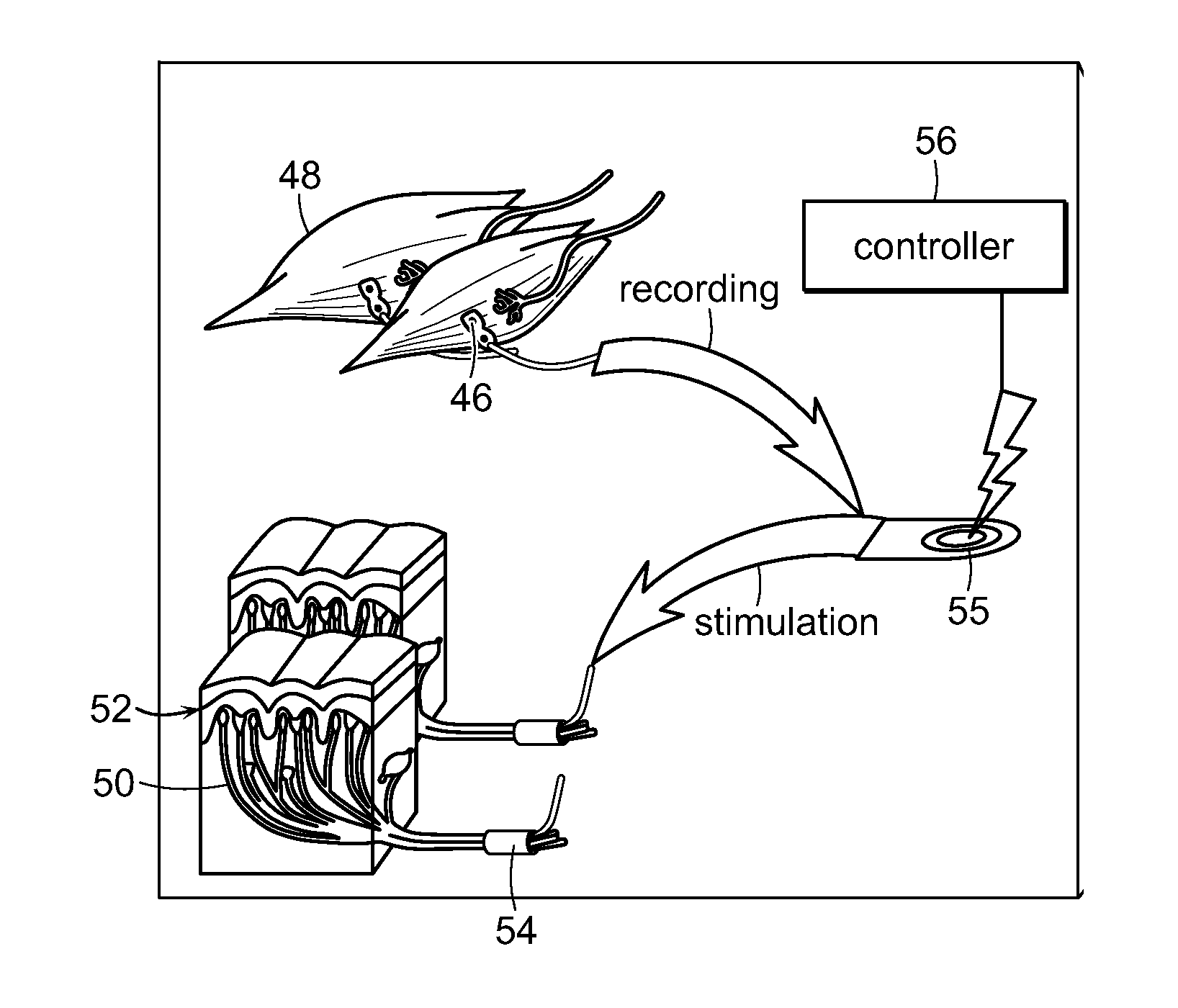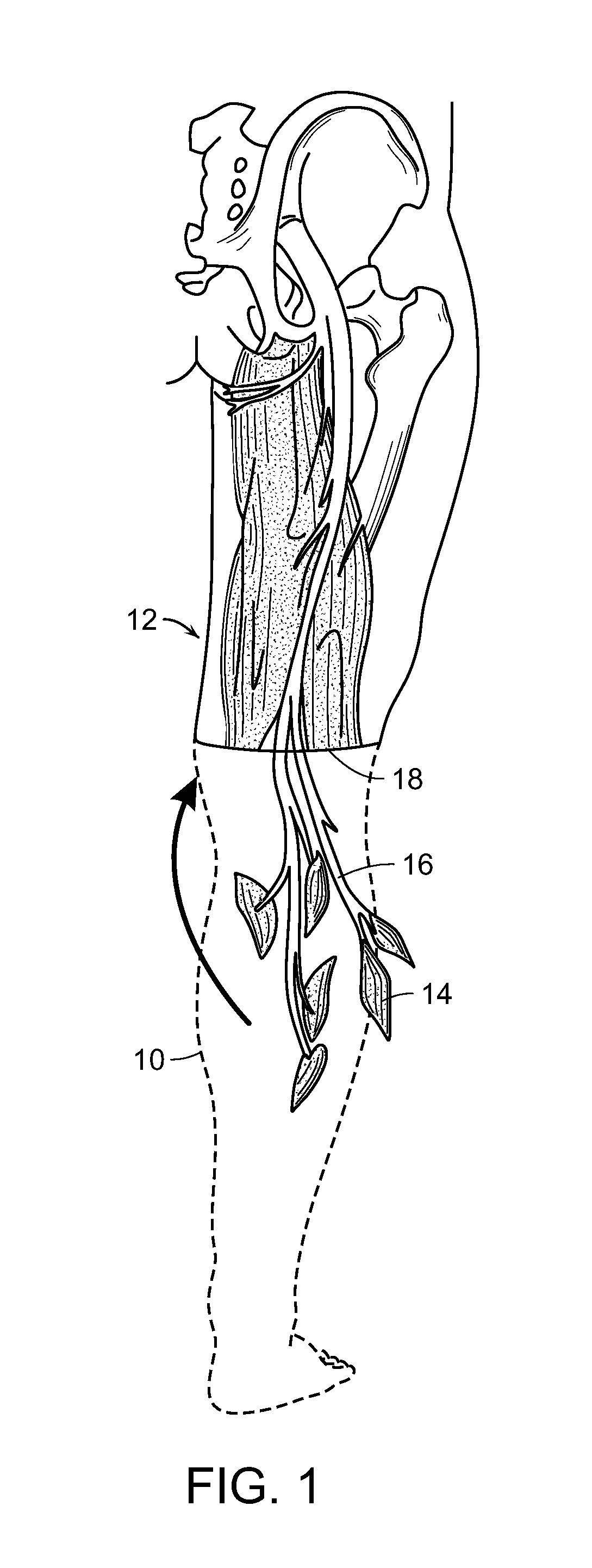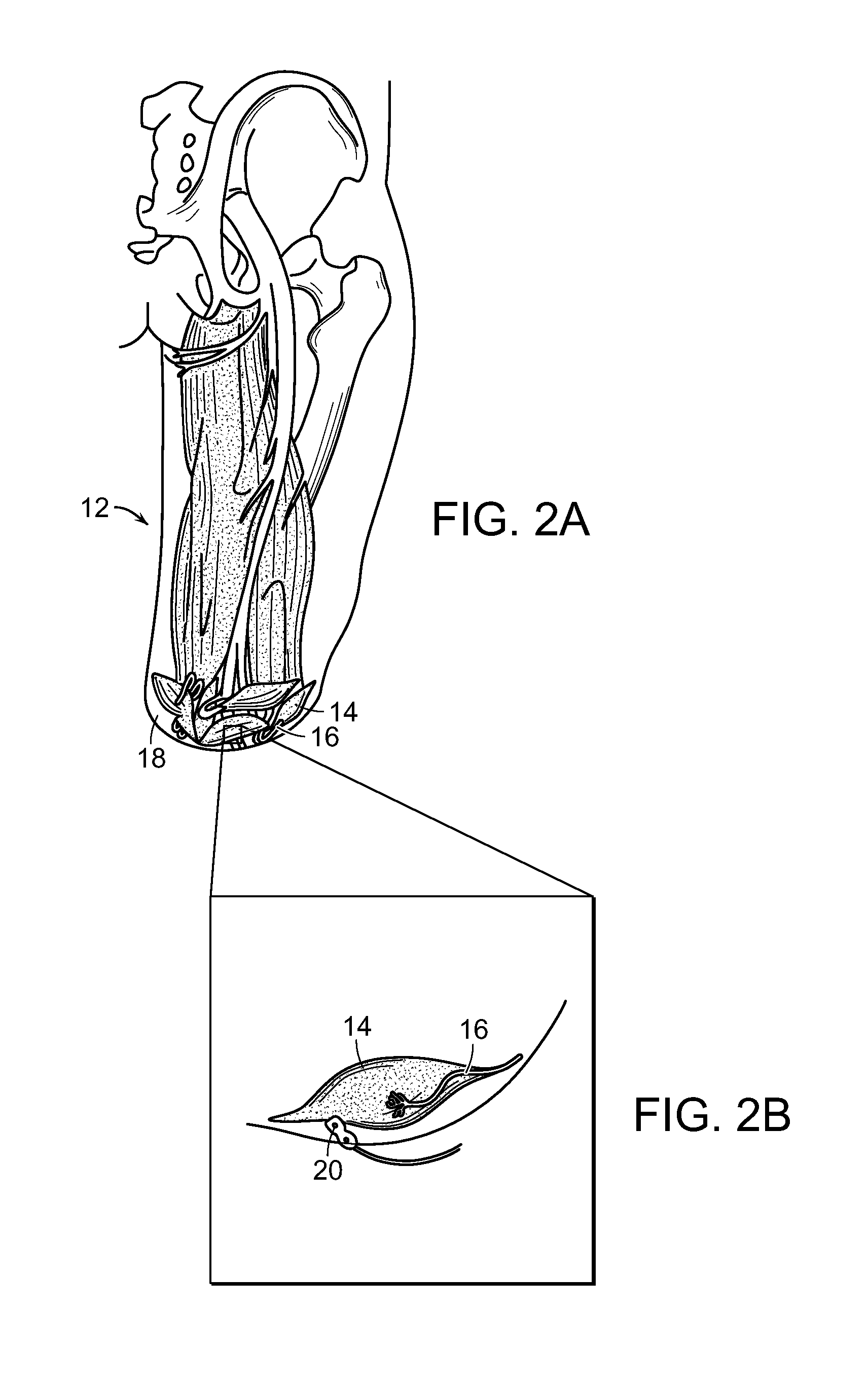Peripheral Neural Interface Via Nerve Regeneration to Distal Tissues
a neural interface and peripheral neural technology, applied in the field of peripheral neural interface via nerve regeneration to distal tissues, can solve the problems of poor utilization of powered prostheses, unoptimized elimination of native tissue functionality for the greater good, and still struggled developers to solve problems, so as to maximize the potential for natural neural control and enhance the effect of prosthetic control
- Summary
- Abstract
- Description
- Claims
- Application Information
AI Technical Summary
Benefits of technology
Problems solved by technology
Method used
Image
Examples
first embodiment
[0068]FIGS. 1, 2A and 2B are schematic representations of one embodiment of the method of the invention that includes the method of the restoring at least partial function of a human limb. At least a portion 10 (shown in outline) of an injured or diseased human limb 12 from an individual is surgically removed, leaving intact at least a portion of selected muscles 14 from the damaged portion of the human limb, including blood vessels and nerves 16 associated with that portion of the selected muscles 14. The selected muscles are transplanted to a surgical site 18 of the individual where the human limb was removed. The transplanted selected muscles 14 and associated nerves 16 are then contacted with electrodes 20 (FIGS. 2A and 2B), whereby signals can be transmitted to and from nerves 16 at the transplanted muscles 14 to thereby control a prosthetic limb (not shown) that is linked to the electrodes and extends from the surgical site 18.
[0069]A model for a transfemoral (above-the-knee) ...
second embodiment
[0087]FIGS. 4-6 are schematic representations of a second embodiment of a method of the invention for restoring at least partial function of a human limb. Specifically, FIG. 4 is a schematic representation of surgical removal of a portion 22 (in outline) of an injured or diseased human limb 24, in outline, leaving intact a portion of selected muscles 26 and selected glabrous skin patches 28, including blood vessels and nerves 30 associated with those portions of the selected muscles 26 and glabrous skin patches 28, according to another embodiment of the invention. Alternatively, or in addition, the nerve can be a new regernative innervation nerve. “New regenerative innervation nerve,” as that term is employed herein, is a nerve that has regenerated or grown into muscle or skin cells. Similarly, an “end organ,” as that term is employed herein, is a tissue body into which a nerve regenerates. Thus, a muscle body or a skin body into which a nerve has regenerated are end organs. FIG. 5A...
third embodiment
[0093]A third embodiment of the method of restoring at least partial function of a human limb of the invention includes sensory feedback and, as illustrated in FIGS. 7A-7B, the use of implanted electrodes 46 at muscles 48 and other implanted electronics 55 for registering EMG activity. FIG. 7A is a schematic representation of contacting native sensory innervation 50 of a skin patch 52 with nerve cuffs 54, wherein the nerve cuffs 54 are linked to a controller 56, and selectively stimulates native sensory innervation by actuating the nerve cuffs 54 with the controller 56. Nerve cuffs 54 are linked to implanted electronics 55 which are, in turn connected, such as by a wireless connection, to controller 56, as shown in FIG. 7A. FIG. 7B is another schematic representation of the embodiment of the invention shown in FIG. 7A, showing placement of implanted electronics and the nerve cuffs of FIG. 7A. In this embodiment, relocated distal skin 52 and its native sensory nerves 50 are packaged ...
PUM
 Login to View More
Login to View More Abstract
Description
Claims
Application Information
 Login to View More
Login to View More - R&D
- Intellectual Property
- Life Sciences
- Materials
- Tech Scout
- Unparalleled Data Quality
- Higher Quality Content
- 60% Fewer Hallucinations
Browse by: Latest US Patents, China's latest patents, Technical Efficacy Thesaurus, Application Domain, Technology Topic, Popular Technical Reports.
© 2025 PatSnap. All rights reserved.Legal|Privacy policy|Modern Slavery Act Transparency Statement|Sitemap|About US| Contact US: help@patsnap.com



